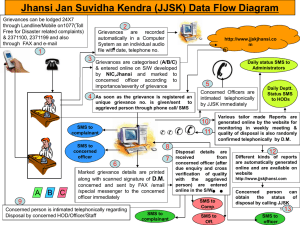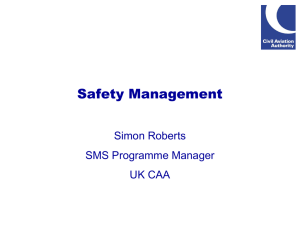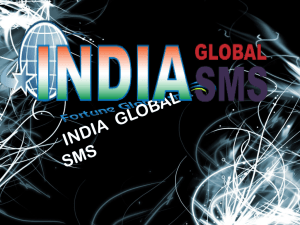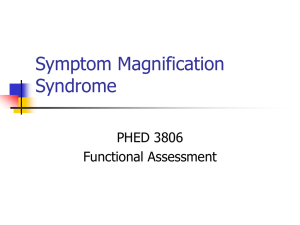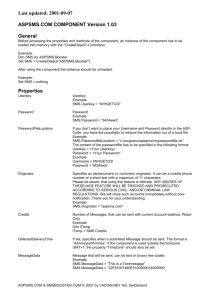Speech to Text Project Report: Voice Recognition System
advertisement
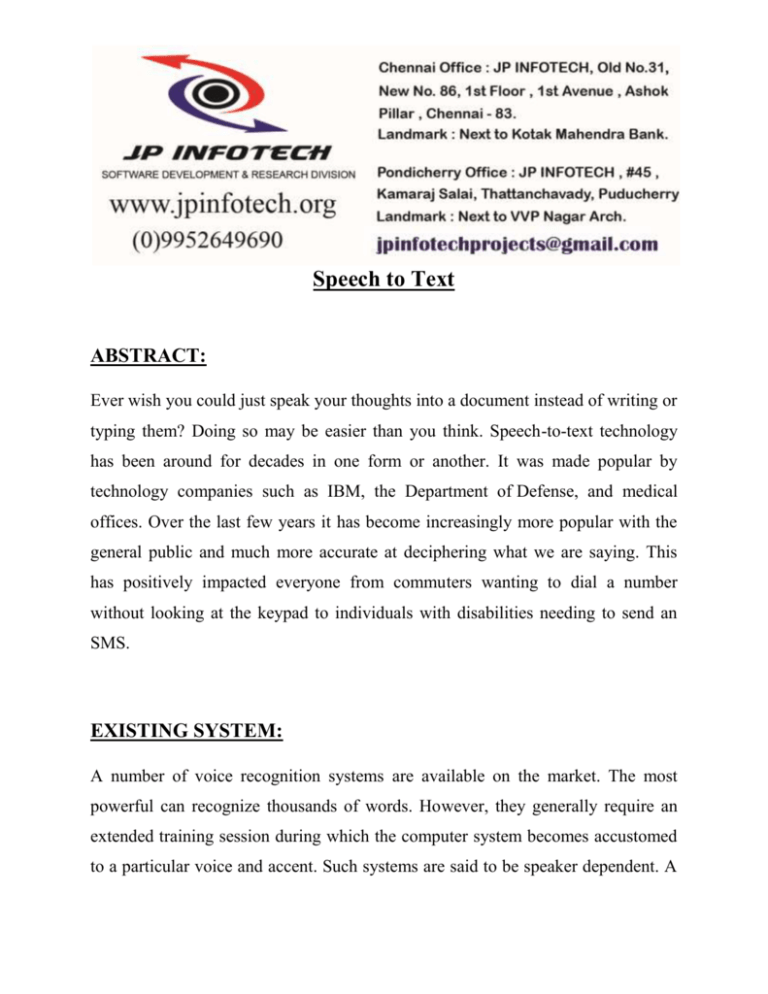
Speech to Text ABSTRACT: Ever wish you could just speak your thoughts into a document instead of writing or typing them? Doing so may be easier than you think. Speech-to-text technology has been around for decades in one form or another. It was made popular by technology companies such as IBM, the Department of Defense, and medical offices. Over the last few years it has become increasingly more popular with the general public and much more accurate at deciphering what we are saying. This has positively impacted everyone from commuters wanting to dial a number without looking at the keypad to individuals with disabilities needing to send an SMS. EXISTING SYSTEM: A number of voice recognition systems are available on the market. The most powerful can recognize thousands of words. However, they generally require an extended training session during which the computer system becomes accustomed to a particular voice and accent. Such systems are said to be speaker dependent. A speaker dependent system is developed to operate for a single speaker. These systems are usually easier to develop, cheaper to buy and more accurate, than but not as flexible as speaker adaptive or speaker independent systems. Speaker – dependent software works by learning the unique characteristics of a single person's voice, in a way similar to voice recognition. New users must first "train" the software by speaking to it, so the computer can analyze how the person talks. This often means users have to read a few pages of text to the computer before they can use the speech recognition software DISADVANTAGES OF EXISTING SYSTEM: Speaker Dependent Slow Recognition PROPOSED SYSTEM: This paper presents techniques for speech-to-text and speech-to-speech automatic summarization based on speech unit extraction and concatenation. For the former case, a two-stage summarization method consisting of important sentence extraction and word-based sentence compaction is investigated. Sentence and word units which maximize the weighted sum of linguistic likelihood, amount of information, confidence measure, and grammatical likelihood of concatenated units are extracted from the speech recognition results and concatenated for producing summaries. For the latter case, sentences, words, and between-filler units are investigated as units to be extracted from original speech. These methods are applied to the summarization of unrestricted-domain spontaneous presentations and evaluated by objective and subjective measures. It was confirmed that proposed methods are effective in spontaneous speech summarization. ADVANTAGES OF PROPOSED SYSTEM: Speaker independent Speaker adaptive Pick Suggestions MODULES Voice Recognition Pick Suggestion Pick Contact Send SMS MODULE DESCRIPTION: Voice Recognition: Speech Recognition (SR) is the translation of spoken words into text. It is also known as "automatic speech recognition", "ASR". Our system analyze the person's specific voice and use it to fine tune the recognition of that person's speech, resulting in more accurate transcription. The best part of the project is user no need to enter the message he want to send, you simply speak the message content then the voice will be converted into the text, In this module we getting voice input from the user and record that voice, after recording user voice, we will process the and recognize the text then show it to user. Pick Suggestion: Even though User speak the English fluently, system can’t recognize the voice 100% because each and every human having different speech speed and pitch, so system cant perfectly translate their voice into text, but it will match the user voice into many different texts and show that to the user to pick user desired output. If the desired text is not displayed in the suggestion, then user can close the suggestion and again speak. Pick Contact: To send SMS we need the message content and the recipient who is going to get the message. So user must give the contact number of his choice to send SMS. He knows the number then he can directly enter the number into recipient textbox. If he can’t remember the number and he saved it in the contacts. Then he can simply choose to pick contact option. If user chose to pick number from contact, all the available contact with their phone number will be displayed in list to the user. Then he can pick any one of the number to send SMS, picked number will be inserted in the recipient field. Send SMS: In this module, the system will send the SMS to the recipient using SMS Manager in the Telephony Service. In this we have the recipient number and the message to be send. We will first create a object for SMS Manager in the Telephony service, using the method sendTextMessage system will sent the message. After sent SMS to desired recipient we need to update the message content to view and retry the sent SMS in the user SMS database. SYSTEM REQUIREMENTS: HARDWARE REQUIREMENTS: System : Pentium IV 2.4 GHz. Hard Disk : 40 GB. Floppy Drive : 1.44 Mb. Monitor : 15 VGA Colour. Mouse : Logitech. Ram : 512 Mb. MOBILE : ANDROID SOFTWARE REQUIREMENTS: Operating system : Windows XP/7. Coding Language : Java 1.7 Tool Kit : Android 2.3 ABOVE IDE : Eclipse


